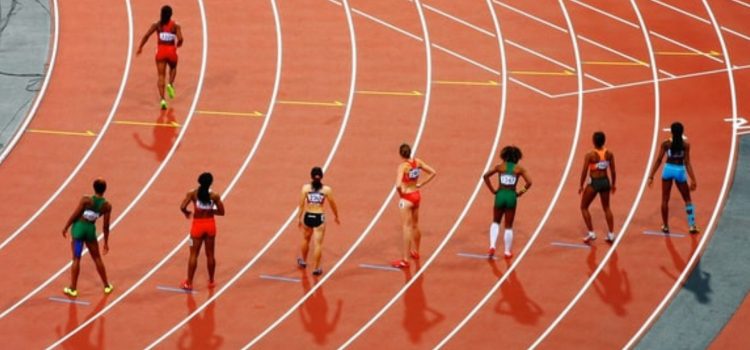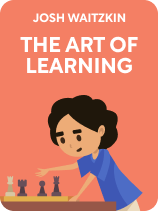

This article is an excerpt from the Shortform book guide to "The Art of Learning" by Josh Waitzkin. Shortform has the world's best summaries and analyses of books you should be reading.
Like this article? Sign up for a free trial here .
Is there a trick to winning competitions? How do the world’s top athletes consistently stay on top of their game?
According to American chess player Josh Waitzkin, the key to winning competitions, even when the margins are incredibly slim, is to operate on a deeper, more subtle level than your opponents. In practice, this means achieving enhanced perception through deep refinement of your skills and control of your mental arena.
Here’s how to win competitions even when the margins are small.
Develop Enhanced Perception
In his book The Art of Learning, Joshua Waitzkin explains how to win competitions over and over again. The key, he says, is to develop enhanced perception in high-performance states. This comes from refining your skills until they flow seamlessly, intuitively, and effortlessly. Once you’ve reached technical mastery, the brain processes more information with less effort.
He explains that, subjectively, this feels like enhanced perception: You’ve grown so sensitive to the minutiae of the techniques that time seems to slow down. Punches seem to come in slow motion, because you’re intimately aware of every subtle movement—the shift of weight that telegraphs it, the opponent’s breath in to prepare, the shifting forward of his shoulder, and so on.
The 2 Ingredients for Enhanced Perception
How do you consistently “slow down time” and perform at such a high level? There are two ingredients.
Ingredient #1: Relaxed, Focused Presence
The first ingredient is a relaxed, focused presence that allows the unconscious mind to navigate your network of techniques and deploy them without conscious thought. Waitzkin argues that performing from instinct requires balancing conscious presence with unconscious, intuitive action.
When you’re building your network of chunks (as we explained in Chapter 2), you’ll eventually reach a point where the layers of principles and patterns become too complex to consciously navigate. For example, think of spoken language. There are simply too many things to consciously consider—word choice, grammatical patterns, tone of voice, meaning and subtext—and everything changes depending on the context (you’ll speak differently to your grandma than to your friends, or to strangers).
So, Waitzkin says, you have to rely on your unconscious mind to make sense of the information, and to effectively act. With language again, we’d struggle if we had to consciously consider every principle that governed every sentence we spoke. But we don’t—we all speak from deeply instilled linguistic intuition.
To navigate by intuition in high-pressure situations, Waitzkin says you need to relax your conscious mind and allow the mental chatter to recede. This state allows your conscious and unconscious minds to work in tandem. He describes it as follows:
- First, you consciously direct your attention to the problem.
- Then your unconscious takes it in, processes it, and offers up creative solutions to the problem.
- Then you consciously evaluate those solutions and hash out practical details.
Say you’re writing, and you need to articulate a complex idea. Instead of trying to consciously work it out, you simply relax, wait, and let your intuition surface the right words. Then you consciously handle the practical details, like typing it out, adjusting punctuation and phrasing, and so on.
Ingredient #2: Deeply Refined Skills
The second ingredient is a deeply refined repertoire of skills, grounded in fundamentals and developed according to your personal style. Building up a network of interwoven chunks yields an instinctive grasp of the skill.
When you have a deeply refined network of chunks for some skill, your unconscious mind does most of the processing. Those circuits fire automatically, and that frees up your conscious mind for navigating the present situation (like managing unexpected changes, unfamiliar tactics, or acting on your own creative ideas).
Because of this efficient back-end processing, you consciously experience things in more detail with less effort. Think of a video slowed down to one frame per second—that’s a decent approximation of the experience as Waitzkin describes it.
So in a wrestling match, for example, you would perceive all your opponent’s subtle motions in great detail. When they start to lunge you’d notice the tiniest initial telegraph: How they shift their weight, the movement of their eyes, an inhalation that telegraphs the attack. To the untrained eye this is indecipherable, but a master reads their opponent as effortlessly as you read this text.
According to Waitzkin, the ability to operate on this level of deep, subtle perception is essential to becoming a strong competitor. If your opponent perceives the fight more efficiently than you, they’ll be able to exploit your lesser awareness and send you packing.
Control the Mental Arena
Aside from developing enhanced perception, another key high-level strategy is to control the mental battle—keen perception is no use if you’re easy to manipulate. Waitzkin explains that everyone near the top has technical mastery, so at the highest level, competition takes place on the psychological battlefield. To win, you have to learn how to read your opponent and exploit the chinks in their mental armor. This is especially true when you’re evenly matched in technique.
(Shortform note: Snowboarding culture provides a counterpoint to Waitzkin’s perspective. While chess and martial arts are cutthroat arenas, snowboarding culture is more laid back and encourages riders to enjoy themselves. In the 2022 Winter Olympics, both male and female competitors showed camaraderie in cheering each other on, celebrating great runs, and supporting the medal winners, even when they didn’t win. Waitzkin, in contrast, has an intensity characteristic of the vicious scholastic chess scene, which fueled his strategic, pragmatic approach to excellence.)
Learn to Read and Not Be Read
We all have “tells,”—unconscious habits that give away how we’re feeling or indicate what we’re going to do. Waitzkin emphasizes the importance of “reading” the tells of your opponents.
You can study tells by paying attention to your competitors in and out of competition:
- In competition, look for things such as their breathing patterns, blinks that precede movement, and whether they get emotional mid-competition.
- Outside of competition, Waitzkin suggests that many competitors obliviously reveal aspects of their psychology—for example, you might notice that a rival of yours gets impatient over lunch between matches or frustrated with hotel accommodations.
(Shortform note: In poker, you can study your opponent at the table and elsewhere. At a live table, pay attention to opponents’ eyes, how they handle their chips and react to their cards, and whether they sound nervous in casual table talk. Outside of the game, Waitzkin’s tips hold true—paying attention to how they eat, how they converse, and how they conduct themselves can reveal psychological traits that you can exploit in the game. For example, you might find that they’re often overconfident at social events, and that translates to recklessness at the poker table.)
Waitzkin doesn’t say explicitly how to train this observational ability, but we can infer that it takes repeated practice. Whether you’re studying tai chi, chess, poker, Go, or whatever else, getting a dedicated practice partner helps familiarize you with common tells and twitches that may give away your opponent’s mind state.
Observing your opponents tells is a great way to prepare for competition. Understanding who your opponents are emotionally helps you exploit their specific weaknesses.
(Shortform note: While it may seem like studying your opponent’s psychology outside of the arena is ruthless, such gamesmanship is not typically against the rules. It stretches them, highlighting the fact that you need to push the limits to become the best. This level of intensity prioritizes winning, rather than enjoyment, which might contradict Waitzkin’s earlier recommendation to focus on the process. On the other hand, he might view it as an extension of the process—assuming part of your process is to become the best in the world. It really depends on how far we each want to take our skills.)
While it’s great to read your opponents, it’s crucial to mask your own state of mind. If you’re easy to read, your opponents will exploit your weaknesses. Waitzkin doesn’t prescribe specific steps, but he does describe the strategy he used: He would mix false emotion with genuine emotion.
By oscillating unpredictably between expressiveness and an impenetrable poker face, he’d confuse his opponents about how he actually felt. Then when he expressed sincere emotion, his opponents wouldn’t know whether or not it was genuine.
(Shortform note: For a familiar example of reading, think of the classic “poker face.” It’s the characteristic anti-reading technique. It’s crucial for concealing your emotions, psyching out your opponents, projecting an illusion of confidence, and so on. Unlike Waitzkin in chess, it’s unusual to express too much personality in a live poker game, since savvy opponents can easily catch on to unsophisticated tricks.)

———End of Preview———
Like what you just read? Read the rest of the world's best book summary and analysis of Josh Waitzkin's "The Art of Learning" at Shortform .
Here's what you'll find in our full The Art of Learning summary :
- Life advice from chess prodigy and tai chi World Champion Josh Waitzkin
- Detailed looks at the psychological and technical sides of skill-building
- How to build any skill from the bottom-up






